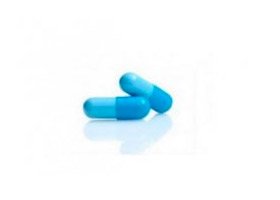
All iLive content is medically reviewed or fact checked to ensure as much factual accuracy as possible.
We have strict sourcing guidelines and only link to reputable media sites, academic research institutions and, whenever possible, medically peer reviewed studies. Note that the numbers in parentheses ([1], [2], etc.) are clickable links to these studies.
If you feel that any of our content is inaccurate, out-of-date, or otherwise questionable, please select it and press Ctrl + Enter.
Ingaflu
Medical expert of the article
Last reviewed: 03.07.2025

Ingaflu is an antiseptic drug used for throat diseases.
ATC classification
Active ingredients
Pharmacological group
Pharmachologic effect
Indications Ingaflu
It is used for local therapy for diseases of the oral mucosa and ENT organs that have an infectious and inflammatory nature (such as laryngitis with tonsillitis and pharyngitis, as well as ulcerative or aphthous stomatitis).
Release form
It is released in the form of a spray, in a glass bottle with a capacity of 20 ml. The pack contains 1 such bottle.
Pharmacodynamics
The medicine has antimicrobial, disinfectant and anti-inflammatory properties.
Sulfonamides (streptocide elements, as well as sulfathiazole) have antimicrobial (bacteriostatic) activity against gram-negative and -positive cocci, shigella, klebsiella, E. coli, clostridia, cholera vibrio, influenza bacillus, anthrax bacillus, diphtheria corynebacterium, plague bacillus, and also against Toxoplasma gondii, chlamydia and Actinomyces spp.
Sulfonamides act by competitive antagonism of PABA and, in addition, by competitive inhibition of dihydropteroate synthetase. As a result, there is a disorder in the binding of tetrahydrofolate, which is necessary for the binding of nucleic acids.
Eucalyptus and peppermint oils, as well as thymol, are the constituent elements of the medicine. They also have disinfectant properties and have a moderate mucolytic and anti-inflammatory effect.
Dosing and administration
The medicine is used locally – it is used to irrigate the oral and nasopharyngeal mucous membranes.
Before use, remove the cap from the bottle and install a special spray nozzle on it. After that, insert the nozzle with the free end into the oral cavity and make 3-4 sprays. The procedure must be performed 4-5 times a day (for an adult), after meals or in between meals. For children over 2 years old, the medicine is used 1-2 times a day.
The duration of therapy is about 3-10 days.
The frequency and duration of drug use are selected by the doctor for each individual patient, taking into account the severity of the pathology.
To avoid clogging of the sprayer after the irrigation procedure, it should be blown out or rinsed with boiled water.
 [ 1 ]
[ 1 ]
Use Ingaflu during pregnancy
There is no information on the use of Ingaflu during lactation or pregnancy.
Contraindications
It is contraindicated to use the spray if you have hypersensitivity to medicinal elements.
Side effects Ingaflu
The spray is usually tolerated by patients without negative consequences. Only sometimes vomiting or nausea occurs, as well as local symptoms (such as a sore or burning sensation in the mouth) and signs of allergy.
Overdose
There is no data on the development of poisoning by the drug. In theory, one can expect potentiation of the side effects of the drug.
To eliminate the disorders, you should stop using the spray, rinse your mouth with warm boiled water, and also carry out symptomatic procedures.
Interactions with other drugs
The combined use of Ingaflu and PABA derivatives (such as anesthesin, novocaine and dicaine) may lead to a decrease in the antimicrobial properties of the drug.
 [ 2 ]
[ 2 ]
Shelf life
Ingaflu can be used for 1.5 years from the date of manufacture of the therapeutic agent.
Application for children
The drug is prohibited for use in children under 2 years of age. It should be used with caution in older children, as it may cause reflex bronchial spasm.
Analogues
The following drugs are analogs of the drug: Lugol with Kameton and Eucalyptus, Falimint and Ingalipt with Marigold Flowers, as well as Anginovag and Faringosept.
Manufacturer
Attention!
To simplify the perception of information, this instruction for use of the drug "Ingaflu" translated and presented in a special form on the basis of the official instructions for medical use of the drug. Before use read the annotation that came directly to medicines.
Description provided for informational purposes and is not a guide to self-healing. The need for this drug, the purpose of the treatment regimen, methods and dose of the drug is determined solely by the attending physician. Self-medication is dangerous for your health.

